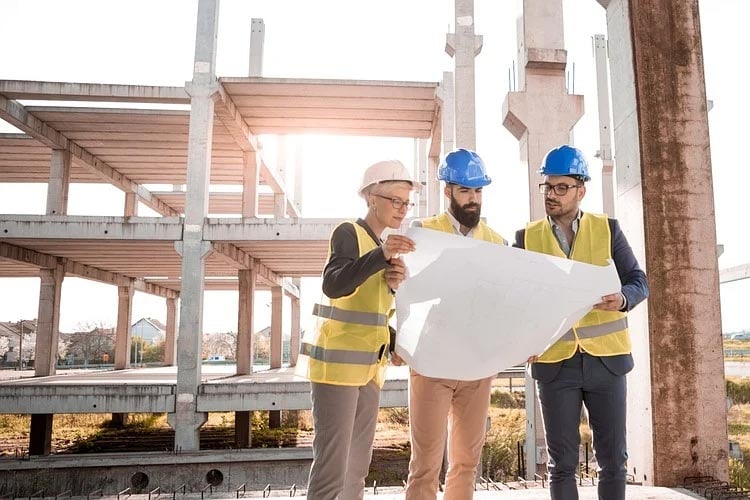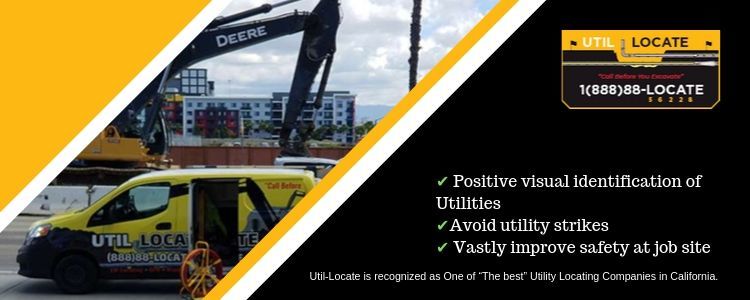Every construction project requires meticulous planning, safety precautions, and a highly-trained crew. From holding regular safety briefings to choosing modern construction methods like utility potholing and vacuum excavation, there are a lot of ways you can ensure your construction site is well-managed, safe, and blunder-free. But when these methods are overlooked, construction mistakes and blunders are inevitable and can lead to huge consequences.
To keep your crew safe and your construction project progressing smoothly, we’ve compiled a list of 8 of the most common construction blunders. In the spirit of ‘forewarned is forearmed’, this list will help you stay prepared for anything while managing your construction site.
1. You Don’t Plan Enough
Of course, every construction project will require planning permission, permits, and an understanding of the layout of the construction site. However, this is only scratching the surface of everything that needs to be planned both before beginning the work and while the work is being carried out.
You should have a solid execution plan that will explain the project strategy and timeline for everyone involved – including subcontracted teams. If you don’t have this type of plan, things will get complicated, and confusing, and can lead to delays, mistakes, and miscommunication.
To avoid this blunder, make sure that your management team creates a clear execution plan and strategy. This should include practically everything: from construction resources and deadlines to the budget and safety training days. This plan will ensure that everyone involved in the construction project is informed and prepared.
2. No Visual Verification
One of the most important actions you need to take when beginning a construction project is locating any subsurface-level utility lines that might be running under the work site. A huge blunder you can make is to rely only on old maps of the site.
While these maps indicate the general area of utility lines, they are not always 100% accurate and might not include all of the utilities. Not knowing exactly where the lines are located can lead to striking the utility lines. Fixing this is a costly and time-consuming process.
Utility potholing is the best way to ensure you do not strike a utility line because it enables you to visually verify the location of the lines. The most efficient and risk-free method of utility potholing is professional vacuum excavation. Hydro vacuum excavation involves the use of water pressure to dig holes throughout the construction site to reveal the exact location of the utilities. Once the locations are verified, construction work can continue without the risk of damaging important utility lines.
3. You Use the Wrong Method or Equipment
The equipment and techniques used on construction sites are always evolving, so it can be very tricky to keep up with the newest and best developments. However, it’s important to move with the times and utilize these new techniques. Many are designed to be safer, more efficient, and more affordable than older methods.
For instance, when excavating for utilities, construction sites used to rely on manual labor or clunky backhoes, which were prone to striking utility lines. Now, most construction projects opt for hydro vacuum excavation because it is the safest, quickest, and most cost-effective method. By neglecting to use newer methods, you are going to find that work takes longer and more accidents and injuries occur.
4. Ignoring Safety Measures
The first priority on any construction site is safety. Your crew and members of the public should always be kept safe. Don’t just rely on one training session before the work begins. Instead, the manager of a construction project should schedule regular safety training sessions to ensure that the crew remains aware of how to stay safe while on the job.
5. Budget Failures
Construction projects of any size – large or small – need to stick to a tight budget. Unexpected costs can seriously harm the success of the project and even grind it to a halt. Utility strikes can cause widespread power or energy outages to surround communities, and you will be fined for the damage.
Repairing the utility lines is also very expensive and will cause delays to your project. Don’t fail to factor mistakes and blunders into your budget; or even better, use safer methods like utility potholing to avoid the mistake in the first place.
6. You Don’t Hire Professionals
Some work, like vacuum excavation, needs to be subcontracted to professional teams that have expertise in specific areas. Renting specialized equipment won’t be useful if it is in the hands of an untrained crew. You will end up wasting time and money, and also risk damaging both the site and the equipment in the process.
Professional crews are more costly upfront, but they get the work done much quicker and will know how to operate the machinery safely.
7. You Didn’t Check the Surrounding Areas
You should always know about the area surrounding your construction site – including water sources, population density, and where the nearest dumping sites are. This information will affect how deep you can excavate without causing flooding as well as safety measures that need to be in place to protect members of the public.
The proximity of dumping sites or your resource distributors will also affect your deadlines and budget. The closer these are, the less time your crew will have to spend driving to and from the site, which can end up saving you a lot of time and money.
8. You Lack Defined Project Deadlines
Your execution strategy should include a detailed list of deadlines. With clearly set out goals and deadlines, your team will always understand what is expected, making it easier for them to deliver what is needed. While it’s inevitable that some deadlines will be missed or pushed back, working toward a goal will keep the momentum up and the project moving forward.


